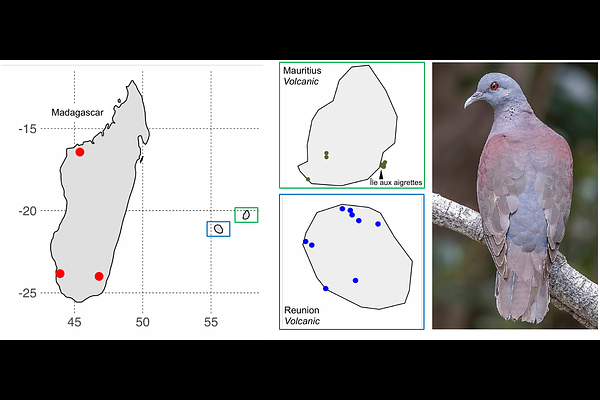Combining population genomics with ancient DNA to understand island colonization history of the Madagascar turtle dove

Combining population genomics with ancient DNA to understand island colonization history of the Madagascar turtle dove
Dwivedi, N.; Heighton, S. P.; Laso-Jadart, R.; Verry, A. J. F.; Nieto-Heredia, A.; Lesturgie, P.; Khost, D.; Bohec, M.; Sackton, T. B.; Chikhi, L.; Orlando, L.; Hume, J. P.; Achaz, G.; Theves, C.; Mona, S.; Warren, B. H.
AbstractThe Mascarene archipelago (Mauritius, Reunion and Rodrigues), characterized by first human arrival being recent, offers a unique setting to study species colonization. Here we use a combination of modern and ancient DNA data as a case study to investigate the recent colonization history of a species of concern in relation to conservation programs: the Madagascar turtle dove (Nesoenas picturata) on Mauritius and Reunion. We generated a reference genome and re-sequenced genomes from contemporary N. picturata populations, as well as genome-wide data from relevant subfossils. A combination of model-free inferences, site frequency spectrum (SFS) based demographic modelling, and analyses of population structure including that of subfossils indicate that N. picturata colonized both islands independently and naturally from Madagascar, long before human arrival. Summary statistics and SFS-based modeling reveal large effective population sizes (Ne) and high genetic diversity in island populations, conflicting with historical accounts of human-induced demographic collapse. Based on goodness-of-fit, genetic structure and diversity indices do not discriminate between two solutions, one of which posits large recent Ne and negligible translocation rates, while the other supports recent severe bottlenecks followed by high post-human translocation from Madagascar. Nonetheless, linkage disequilibrium provides stronger evidence for the latter scenario, which may also explain high genetic diversity. Both modern and ancient DNA data sources independently support the classification of N. picturata as native to both islands. Our findings highlight the importance of validating demographic models with multiple summary statistics, and potential of using a combination of different data sources to resolve colonization history in recent time.